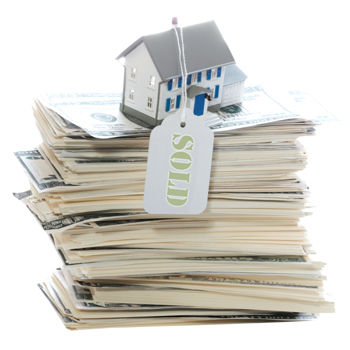How to guesstimate your net profit after selling
 Approximating how much you will make after selling your house is a fairly complex task. Calculating net profit can be tricky when you consider the need to estimate required repair costs, staging fees, other listing needs, and agent commissions.
Approximating how much you will make after selling your house is a fairly complex task. Calculating net profit can be tricky when you consider the need to estimate required repair costs, staging fees, other listing needs, and agent commissions.
So, just how much will you be able to put into your bank account after selling your home? The following is a short list of expenses to deduct from the expected profit, hopefully offering a ballpark figure of the amount you will have to use as a down payment on your next residence.
Current loan balance
Of course you will have to pay off your current note with the proceeds of your sale. Unlike during the recent recession, you most likely should have equity built up – as long as you have owned the home for a reasonable length of time and not used the property as an “open debit card.” This expectedly large expense in calculating your net profit should be rather easy to determine; just look at your recent mortgage statement from your lender as a close, but not exact amount due.
Fix up and/or repairs
If the buyer gave you a competitive offer and you agreed to repair any noted deficiencies, you must get the work done by a professional – or someone competent – to assure that the terms of the agreed-to repairs are satisfied. If you are ready, willing and able to do the work yourself fine (simply get ready to add up the cost of materials), but if not you will need to deduct the cost of paying the professional from the gross sales price. Obviously, if you are fixing a fence the cost will be far less than having to pay for a new roof.
Local taxes due
Let’s skip the first truism of life (the other reality) and focus on the second: taxes. No matter what, the county will get its cut of the sale of your home. In Solano County, the total tax due is dependent on many variables. Perhaps, the best way to get a workable number is to consult with your real estate agent or a tax professional to get an estimate prior to selling the home. As a general rule, be liberal in your amount so that your net profit expectation is not overly ambitious, leading to discouragement and potentially, seller’s remorse.
Escrow and settlement fees
Of course you will have to add in the expense of paying the mortgage and finance entities for undertaking the paperwork to complete your transaction. Perhaps, the best way to obtain an educated estimate of the total cost is to consult with your agent about historical expenses and work from the initial amount of mortgage and lender fees via a fairly accurate good faith estimate. Remember, fees and costs change (if the transaction does not occur in short order), so it is again best to be conservative and estimate higher expenses to avoid disappointment.
Agent commission
It goes without saying that you must account for the commission you are required to pay your agent for their services. Traditionally, seller’s agents work for three percent of the sales price, though with an ever increasing agent market, you may have negotiated for less (perhaps 2 and ½ percent). In either case, the math is pretty straight forward. Multiple the sales price by the percentage you agreed to on the sales contract and add that rather larger expense (though well worth it in most instances) to the aforementioned list of costs to arrive at a reasonable net profit expectation.